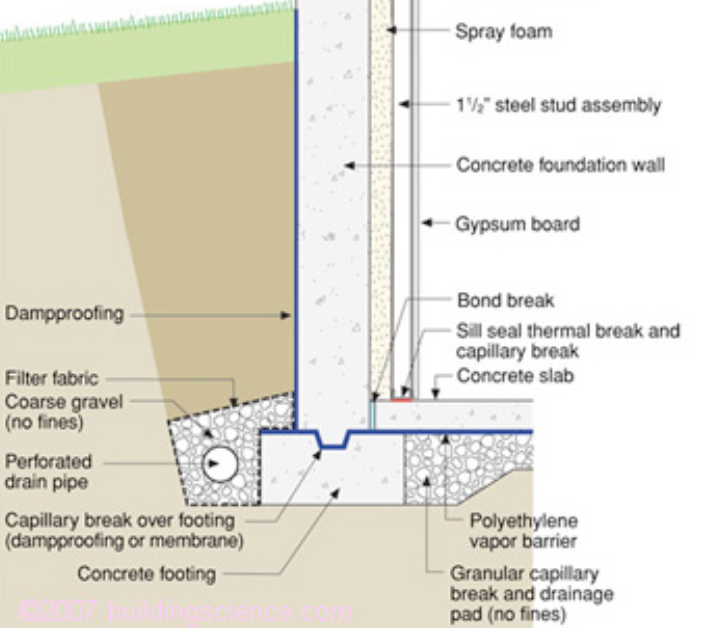Capillary Break Beneath Slab
Water gets through the foundation of most houses, either through bulk moisture leaks or through a process called capillary action. Once inside, the water can create significant problems for the home, including structural damage, mold, and poor indoor air quality.
Bulk moisture is the flow of water through holes and cracks. Bulk water usually moves with gravity down and through foundation walls if large openings or cracks allow it to flow freely into the building. Capillary action occurs when liquid water wicks into the tiny cracks and open spaces of porous building materials such as masonry block, concrete, or wood. Capillary suction enables porous materials like concrete to wick water in any direction, including upwards against gravity, for surprisingly long distances.
To avoid the infiltration of bulk water via capillary action, Install a capillary break beneath slab foundations (for example, a slab-on-grade or basement slab foundation) consisting of 4 inches of aggregate stone or 4 inches of sand covered by geotextile matting. Install a vapor barrier over this consisting of
≥ 6-mil polyethylene sheeting lapped 6-12 inches with seams sealed, or
≥ 1-inch extruded polystyrene rigid foam insulation with joints taped.
Seal the sheeting or foam at the joints with foundation walls and around posts or pipes coming up from the ground to provide a continuous vapor barrier.
Figure 1 - A capillary break of aggregate and polystyrene is installed under the slab but no capillary break separates the footing from the stem wall so water can wick up into the house. This is a poor design.
Figure 2 - A foundation with a capillary break of aggregate and a polystyrene layer installed continuously from stem wall to slab. This design breaks the flow of water through the footer into the house.
Figure 3 - Polystyrene is laid over aggregate and over footing to provide a capillary break between the ground and the slab and between the footing and the stem wall.



